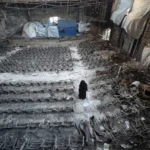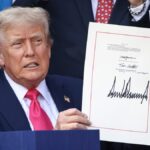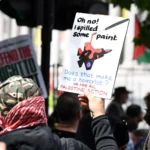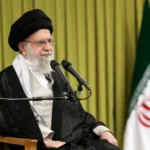Table of Contents
Published By WorldAffair.org
As we move into 2025, the Russia-Ukraine conflict remains one of the most significant and challenging geopolitical crises in recent history. The war, which began in 2022, has already reshaped Eastern Europe and caused global disruptions that continue to be felt in various sectors, including economics, energy, military relations, and global security. The conflict’s ongoing nature and its evolving political and military dynamics make it critical to understand the far-reaching implications it has not only on the countries directly involved but also on international relations and global stability.
In this blog post, we will take a deeper look at the Russia-Ukraine war in 2025, examining its economic consequences, the political realignments it has triggered, and the profound impact it continues to have on global trade, energy security, and military alliances. We will also explore the current state of diplomatic efforts and global governance in response to the crisis.

The Economic Impact: Sanctions and Global Trade Disruptions
The economic ramifications of the Russia-Ukraine conflict are being felt worldwide, with sanctions and disrupted trade routes significantly affecting global markets. In response to Russia’s aggression, Western countries have imposed increasingly severe sanctions targeting Russian banks, energy exports, and key industries. These measures are intended to limit Russia’s ability to fund its war effort, but they have also led to unintended consequences that have rippled throughout the global economy.
Energy Crisis and Its Global Consequences
One of the most significant impacts of the conflict has been on global energy markets. As Russia is one of the world’s largest producers of oil and natural gas, the war has disrupted the flow of energy supplies to Europe, particularly gas exports from Russia to European countries. This has forced European Union nations to rethink their energy strategies and accelerate efforts to reduce dependence on Russian energy sources.
- Energy Diversification: In 2025, European countries have increasingly turned to alternative energy sources, including liquefied natural gas (LNG) imports from the United States, and the expansion of renewable energy solutions like wind, solar, and hydropower. However, this transition has come with its own set of challenges, including high energy prices and supply shortages during winter months.
- Global Energy Price Volatility: The disruption of Russian oil and gas supplies has led to global price hikes. Energy-dependent nations in Africa and Asia are especially vulnerable, as they are forced to pay significantly higher prices for imported energy, exacerbating the financial burden on developing economies.
Impact on Global Supply Chains
Ukraine, often called the “breadbasket of Europe,” plays a key role in global agriculture, particularly in the production of wheat, corn, and barley. The ongoing war has severely disrupted Ukraine’s agricultural production, leading to food shortages and price increases across the globe.
- Food Security Risks: In 2025, countries that rely heavily on Ukrainian grain exports, particularly in the Middle East and North Africa, are experiencing increased food insecurity. Developing nations are feeling the economic strain, as food prices soar, leading to inflation and increased poverty levels.
- Shipping Blockades and Infrastructure Damage: The conflict has also severely damaged key infrastructure in Ukraine, including ports, rail networks, and roads that facilitate the export of agricultural goods. The blockade of the Black Sea ports has further strained global supply chains, leading to delays in shipments of essential goods.

Geopolitical Realignments: NATO and Beyond
As the conflict in Ukraine drags on, the geopolitical landscape has undergone significant shifts. Nations across Eastern Europe are re-evaluating their security arrangements, while others are altering their foreign policies in response to Russia’s increasing aggression.
NATO Expansion: Sweden and Finland Join Forces
One of the most notable developments in 2025 is the expansion of NATO in response to Russia’s aggressive actions. Countries like Finland and Sweden—long neutral in their foreign policy stances—have made the decision to join the North Atlantic Treaty Organization (NATO) in light of the perceived threat posed by Russia’s territorial ambitions.
- Increased NATO Presence: With the inclusion of Sweden and Finland, NATO’s influence in the Nordic and Baltic regions has increased, solidifying its military presence in Eastern Europe. NATO members are now in a stronger position to counter any potential Russian expansion into neighboring countries like Estonia, Latvia, and Lithuania, all of which share borders with Russia.
Russia’s Response: Escalating Tensions
Russia views NATO’s expansion as a direct threat to its influence in Eastern Europe. Moscow’s response has been to strengthen its military presence along its western borders and to increase its use of hybrid warfare tactics, which blend conventional military force with cyberattacks, misinformation campaigns, and economic coercion.
- Proxy War: The war in Ukraine has increasingly taken the form of a proxy conflict, with NATO providing military and financial support to Ukraine, while Russia seeks to bolster separatist movements in Eastern Ukraine and Crimea.

Diplomatic Efforts and International Relations
As the conflict continues into 2025, efforts to reach a diplomatic solution remain elusive. Despite numerous peace talks and ceasefire negotiations mediated by international organizations such as the United Nations and the European Union, neither side has agreed to a lasting settlement.
The Role of International Organizations
Global diplomatic efforts are focused on finding a peaceful resolution to the conflict, but challenges persist. The United Nations continues to call for an immediate ceasefire, while the European Union is leading efforts to provide humanitarian aid and support Ukraine’s recovery.
- Russian Isolation: While some countries like China have maintained a neutral stance, many nations around the world have chosen to support Ukraine’s sovereignty and territorial integrity. Russia faces increasing diplomatic isolation as its military campaign continues.

Conclusion:
The Russia-Ukraine conflict remains one of the most critical geopolitical crises of the 21st century. With its profound economic, political, and military consequences, this war is reshaping the global order in significant ways. As 2025 progresses, the world will continue to grapple with the fallout from the conflict, from economic disruptions and energy shortages to shifting geopolitical alliances. The international community must continue to seek diplomatic solutions while preparing for the long-term impact of this conflict on global peace and security.
Author Profile
- Syed Tahir Abbas is a Master's student at Southwest University, Chongqing, specializing in international relations and sustainable development. His research focuses on U.S.-China diplomacy, global geopolitics, and the role of education in shaping international policies. Syed has contributed to academic discussions on political dynamics, economic growth, and sustainable energy, aiming to offer fresh insights into global affairs.
Latest entries
 Middle East AffairsJuly 14, 2025An Open Letter from Gaza’s University Presidents: Resisting Scholasticide Through Education
Middle East AffairsJuly 14, 2025An Open Letter from Gaza’s University Presidents: Resisting Scholasticide Through Education U.S. PolicyJuly 9, 2025Impacts of the One Big Beautiful Bill Act on the U.S. Mining Sector
U.S. PolicyJuly 9, 2025Impacts of the One Big Beautiful Bill Act on the U.S. Mining Sector Human RightsJuly 2, 2025Palestine Action Is a Moral Compass. That’s Why the UK
Human RightsJuly 2, 2025Palestine Action Is a Moral Compass. That’s Why the UK International PoliticsJune 26, 2025Iran Confirms Serious Damage to Nuclear Sites from U.S. Strikes, Rules Out Meeting with Washington
International PoliticsJune 26, 2025Iran Confirms Serious Damage to Nuclear Sites from U.S. Strikes, Rules Out Meeting with Washington



4 comments
Such a great read! You always have a unique perspective. Looking forward to more
Thank you so much for your support i hope to satisfy readers
Well said! Your blog is becoming one of my favorites. Keep writing!
Another awesome post! When’s the next one coming? I’m hooked!